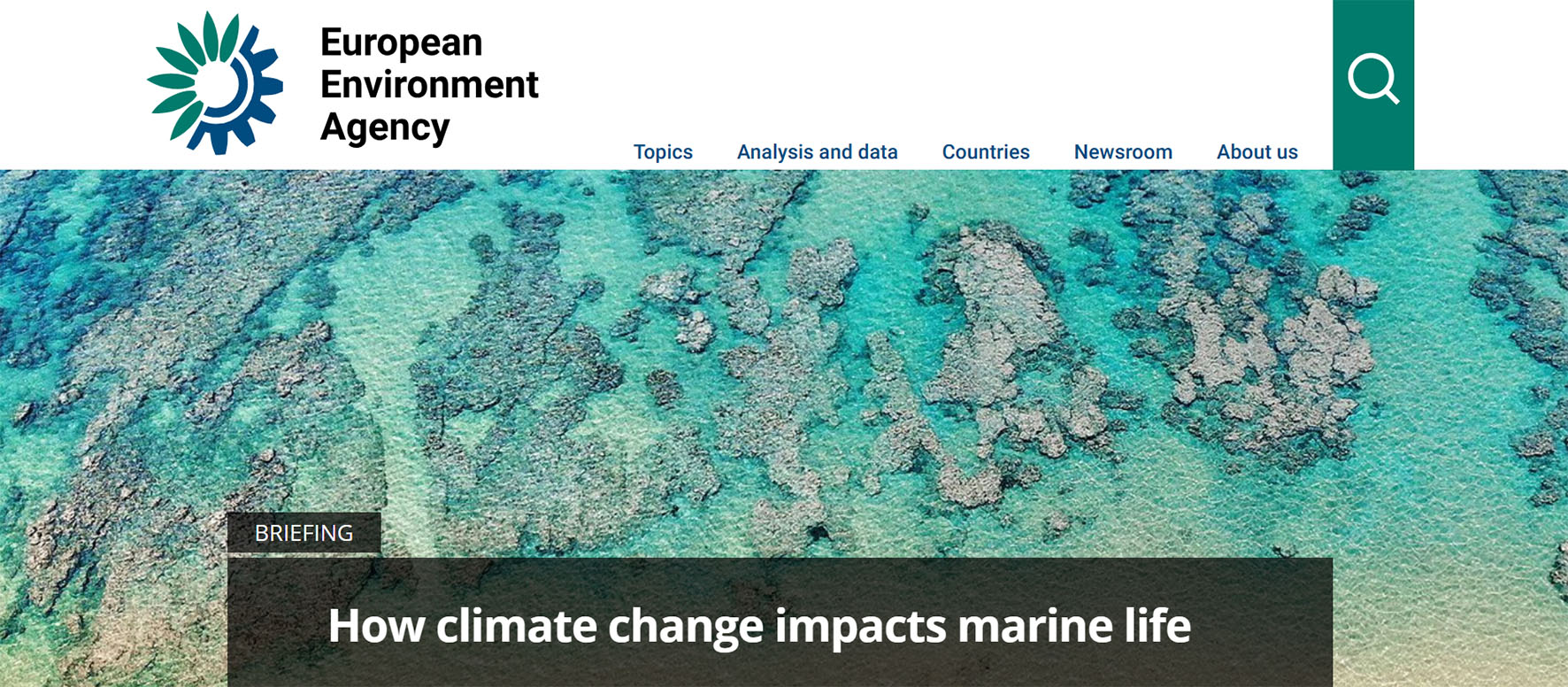
This briefing summarises some of the ways in which climate change is impacting Europe’s marine ecosystems. It identifies how various ecosystem features are influenced by climate change and spotlights potential areas of concern. It also highlights areas where marine life may be more impacted by climate change compared with other areas. This work supports the recent integration of climate change as a key consideration in the Marine Strategy Framework Directive (MSFD). It does this by presenting a spatial description of the vulnerabilities of marine areas to climate change.
Key messages
• Europe’s marine areas and marine life are unequally vulnerable to climate change. Recent research indicates that climate change may account for up to half of the combined impacts on marine ecosystems.
• Semi-enclosed seas (Baltic and Adriatic for example), and shallow coastal areas are more vulnerable to climate change compared to deeper, offshore areas.
• Most species are in a degraded state across Europe’s seas. Bony fish are potentially the only positive exception.
• Bottom-living communities and fish are more vulnerable than highly mobile mammals and birds, for example. This potentially impacts the whole marine food web and dependent fisheries.
• Globally, oceans are changing. Ocean warming (0.88°C higher in 2011-2020 compared to 1850-1900), oxygen loss (down 3-4% by 2100) and ocean acidification (decreased pH by 30% in 2023 compared to 1700) may be occurring at a speed that may be too fast for species to adapt to the changes.
Read the full briefing here!
